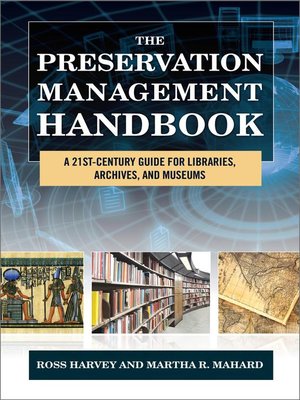The Preservation Management Handbook
ebook ∣ A 21st-Century Guide for Libraries, Archives, and Museums
By Ross Harvey

Sign up to save your library
With an OverDrive account, you can save your favorite libraries for at-a-glance information about availability. Find out more about OverDrive accounts.
Find this title in Libby, the library reading app by OverDrive.



Search for a digital library with this title
Title found at these libraries:
| Library Name | Distance |
|---|---|
| Loading... |
Cultural heritage professionals—museum curators, museum professionals, archivists and librarians— work with their specialized knowledge to prioritize the needs of their collections. Preservation managers draw on experts in climate control, fire safety, pest management and more in developing the large overview of a collection and its needs. And all the special materials within the collections have their experts too.
Here, in one volume, is a wide range of topic-specific expertise that comprises both an enduring text for preservation students as well as an essential one-stop reference for cultural heritage professionals—particularly those in small- to medium sized organizations where resources are limited and professional help is not always at hand.
The editors introduce the reader to the essential tools and principles of a preservation management program in the twenty-first century, addressing the realities of diverse collections and materials, and embracing the challenges of working with both analog and digital collections.
The sections on planning and managing a preservation program contain the basic starting point for any kind of collection, regardless of size and content. Written with the small collection in mind, the principles are nevertheless scalable and widely applicable.
Here, in one volume, is a wide range of topic-specific expertise that comprises both an enduring text for preservation students as well as an essential one-stop reference for cultural heritage professionals—particularly those in small- to medium sized organizations where resources are limited and professional help is not always at hand.
The editors introduce the reader to the essential tools and principles of a preservation management program in the twenty-first century, addressing the realities of diverse collections and materials, and embracing the challenges of working with both analog and digital collections.
The sections on planning and managing a preservation program contain the basic starting point for any kind of collection, regardless of size and content. Written with the small collection in mind, the principles are nevertheless scalable and widely applicable.







